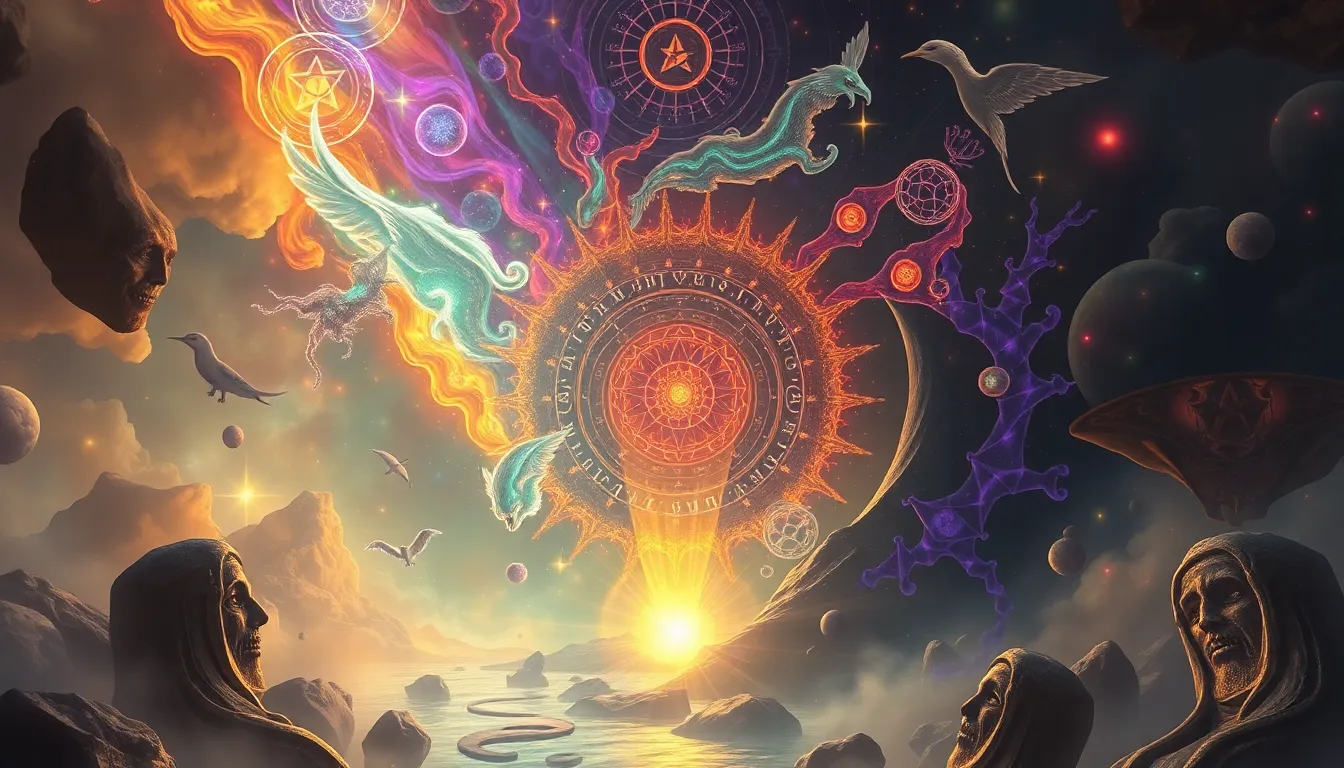The Art of Choosing: How the Scylla and Charybdis Myth Can Help Us Navigate Difficult Decisions
I. Introduction
The myth of Scylla and Charybdis is a powerful narrative from ancient Greek literature, illustrating the perils of navigating between two dangerous options. In this tale, sailors, particularly Odysseus, must choose between the monstrous Scylla, who devours sailors, and the whirlpool Charybdis, which threatens to swallow their entire ship. This myth encapsulates the essence of decision-making, highlighting how choices can lead to perilous outcomes.
In our everyday lives, we are often faced with difficult decisions that can have significant consequences. Understanding how to navigate these choices is crucial for personal and professional growth. This article aims to explore the lessons we can learn from the Scylla and Charybdis myth and apply them to our decision-making processes.
II. Understanding the Myth
The narrative of Scylla and Charybdis originates from Homer’s “Odyssey,” where Odysseus must pass through the strait between these two menacing forces. Scylla is depicted as a six-headed sea monster that snatches sailors from their ships, while Charybdis is a monstrous whirlpool that threatens to engulf anything that gets too close. The myth serves as a poignant metaphor for the difficult choices we face, emphasizing the idea that sometimes there are no safe options.
Key themes in this myth include:
- Danger: Both choices come with significant risks.
- Choice: The necessity of making a decision, even when all options are fraught with peril.
- Consequence: Each choice leads to a different outcome, affecting not only the individual but also those around them.
This myth has been referenced throughout history, symbolizing the timeless struggle of decision-making in human experience. Its relevance persists in modern contexts, where individuals and leaders face similarly daunting choices.
III. The Nature of Difficult Decisions
Difficult decisions are characterized by their complexity and the potential for significant consequences. What makes these choices particularly challenging includes:
- Multiple possible outcomes, often with risks and benefits.
- Emotional investments that cloud judgment.
- Societal or relational pressures that influence the decision-making process.
Psychological and emotional factors play a crucial role in how we approach these decisions. Fear of making the wrong choice can lead to paralysis, while overconfidence can result in hasty, regrettable decisions. Common examples of difficult choices in modern life include:
- Choosing a career path or job offer.
- Making significant financial investments.
- Deciding on personal relationships or family matters.
IV. Lessons from Scylla and Charybdis
The story of Scylla and Charybdis teaches us several valuable lessons about navigating tough decisions:
- Embrace the inevitability of tough choices: It is essential to recognize that difficult decisions are a part of life and cannot be avoided.
- Weighing risks and rewards: Each option will have its pros and cons; understanding these can aid in making a more informed choice.
- The duality of options: Sometimes, the choice between two evils is necessary; understanding the “lesser evil” can provide clarity.
V. Strategies for Navigating Difficult Decisions
To effectively navigate tough choices, consider employing the following strategies:
- Identify personal values and priorities: Understanding what matters most to you can guide your decision-making process.
- Utilize pros and cons lists: Writing down the advantages and disadvantages of each option can provide clarity.
- Seek advice and perspectives from others: Consulting trusted friends, family, or mentors can offer new insights and help you weigh your options.
VI. Case Studies: Applying the Myth to Real-Life Decisions
Real-life applications of the Scylla and Charybdis myth can be seen through various personal anecdotes and historical examples:
- Personal anecdotes: Many individuals can relate to moments where they had to choose between two undesirable situations, such as leaving a secure job for an uncertain opportunity.
- Business and leadership contexts: Leaders often face decisions that require choosing between lower profits and ethical practices, illustrating the need to balance risks and rewards.
- Historical figures’ tough decisions: Leaders like Winston Churchill faced moments during World War II where they had to choose between aggressive action and cautious strategy.
VII. The Role of Intuition and Emotions
In decision-making, it is vital to understand the balance between logic and intuition. Emotional intelligence plays a significant role in how we evaluate options and respond to potential outcomes. Techniques for managing stress during tough choices include:
- Practicing mindfulness to stay present and clear-headed.
- Engaging in stress-relief activities such as exercise or meditation.
- Reflecting on past decisions to learn from previous experiences.
VIII. Conclusion
The insights gained from the Scylla and Charybdis myth offer valuable guidance for navigating difficult decisions. By understanding the themes of danger, choice, and consequence, we can approach our own choices with greater clarity and confidence. Embracing the art of choosing, we can learn to appreciate the complexities of decision-making and the importance of informed choices in our lives.
Ultimately, the myth reminds us that while choices may lead us into perilous waters, the ability to navigate them wisely can lead to personal growth and fulfillment.


